Exploring art ideas can unlock a world of creativity and self-discovery, offering endless possibilities for individuals of all ages. Whether you’re a preschooler, student, or adult, the process of creating art allows for personal expression and fosters growth in various cognitive and emotional skills. This article delves into the fascinating journey of exploring art ideas, providing a comprehensive guide to engaging in meaningful artistic experiences. From understanding the essence of exploration in art to discovering practical strategies for generating creative ideas, we’ll cover a wide range of activities designed to inspire and educate. By diving into the rich tapestry of artistic endeavors, this exploration will reveal how art can serve as a powerful tool for learning, connection, and personal development.
Key Takeaways
– Ignite Creativity and Boost Literacy with Art Activities: Explore a variety of art exercises that combine creative expression with literacy development, fostering both imagination and academic skills.
– Master the 7 Elements of Art for Creative Development: Teach foundational art concepts such as line, shape, color, texture, form, space, and perspective to build a solid artistic foundation.
– Develop 21st Century Literacy Skills: Enhance critical thinking, communication, and adaptability through innovative art-inspired practices that prepare students for modern challenges.
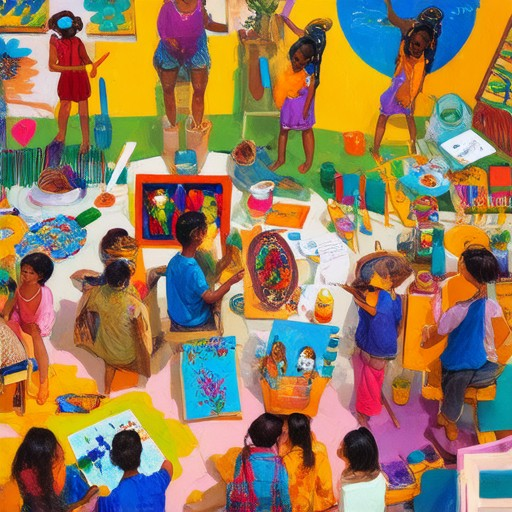
Exploring in Art
Exploring in art refers to the act of discovering and experimenting with various artistic mediums, techniques, and styles to foster creativity and self-expression. This process involves stepping outside of one’s comfort zone to explore different forms of artistic expression, whether through painting, sculpture, photography, digital art, or other creative disciplines.
At Artfull Journey, we believe that artistic exploration is a transformative experience. It allows individuals to connect with their inner selves, uncover hidden talents, and develop a deeper appreciation for art and its limitless possibilities.
Key Aspects of Artistic Exploration
- Personal Growth: Exploring art can lead to personal development by helping individuals understand their emotions, thoughts, and perspectives better. It serves as a tool for introspection and self-discovery.
- Connection to Others: Art has the unique ability to bring people together. Through shared experiences and interpretations, explorers of art can form meaningful connections with others who resonate with their creations.
- Challenging Norms: Artistic exploration often pushes boundaries and challenges conventional ideas. This process can lead to innovative outcomes that surprise and inspire.
Examples of Artistic Exploration
One notable example is the work of Artful Journey , which offers a platform for artists to share their journeys and explore various art forms. Their website features articles, resources, and insights that guide individuals through the creative process, regardless of their skill level.
Competitors like DeviantArt and Pinterest also provide spaces for artistic exploration, showcasing diverse styles and techniques that inspire creators worldwide.
Benefits of Artistic Exploration
- Stress Relief: Engaging in artistic activities can reduce stress and provide a mental escape from daily routines.
- Improved Creativity: Regular exploration fosters innovation and enhances problem-solving skills.
- Enhanced Communication Skills: Artists often develop stronger communication abilities by expressing their ideas visually.
Getting Started
For those looking to begin their own artistic exploration, consider visiting Artful Journey . Their comprehensive resources and guides can help you discover your creative potential and find the right tools to express yourself.
Remember, the journey is as important as the destination. Embrace the process, experiment freely, and let your unique voice shine through your artwork.
What Are Fun Art Activities?
-
Canvas Painting with a Twist
Transform blank canvases into vibrant works of art using unexpected materials like sponges, brushes, and palette knives. Explore texture techniques and color blending for a unique finish.
-
Creative Drawing Sessions
Unleash your imagination with guided drawing workshops focusing on still lifes, landscapes, or portraiture. Perfect for both beginners and experienced artists seeking fresh ideas.
-
D.I.Y. Sculpture Workshops
Get hands-on with kinetic sculptures using everyday objects. Learn how to combine found materials into dynamic, movable art pieces that challenge traditional norms.
-
Mixed Media Collage
Combine paint, paper, fabric, and more to create layered, textured collages. Experiment with different textures and colors to bring abstract concepts to life.
-
Watercolor Sunburst Technique
Master the art of gradient blending in watercolor to create luminous, sun-like effects. Ideal for those looking to explore color theory and brushwork techniques.
-
Hand-Painted Pottery Classes
Transform plain pottery pieces into works of art using slip, underglaze, and glazes. Learn how to apply designs that will withstand firing and last a lifetime.
-
Street Art Mural Projects
Join community-driven mural projects to create large-scale public art. Collaborate with others to design and paint murals that reflect your shared vision and neighborhood identity.
-
Digital Art Contests
Participate in online digital art contests where you can showcase your skills in platforms like ArtStation or DeviantArt. Compete for recognition and prizes while connecting with fellow artists.
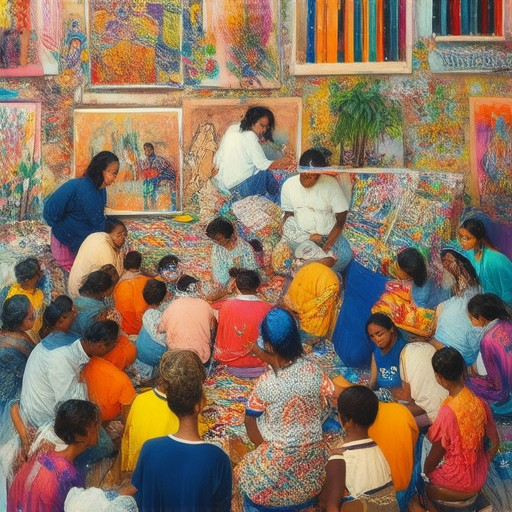
How to Get Creative Ideas for Art
To spark creativity and unlock fresh ideas for your art projects, try these approaches:
- Explore Different Art Forms : Step outside your comfort zone and experiment with various mediums like painting, sculpture, digital art, or photography. Each form offers unique perspectives and techniques that can reignite your creativity.
- Study Nature and Everyday Objects : Look closely at the world around you. Observe patterns, textures, colors, and shapes in nature and everyday objects. These observations often lead to inspiring ideas for abstract or representational artwork.
- Engage with Art History : Study the works of famous artists to understand different styles and techniques. Analyzing masterpieces can provide fresh insights and motivate you to develop your own unique style.
- Experiment with New Techniques : Try something unconventional like mixed media, collage, or graffiti. These experimental methods can push your boundaries and lead to surprising results.
- Set Daily Challenges : Create a routine where you dedicate time to explore new themes or subjects. For example, spend 15 minutes daily sketching scenes from your surroundings or experimenting with color palettes.
- Collaborate and Discuss : Join art communities or groups to share ideas and receive feedback. Engaging with others can expose you to diverse viewpoints and inspire new concepts.
- Use Visual References : Collect images from magazines, online galleries, or museums to gather inspiration. Keep a visual journal to document ideas and explore different aesthetics.
- Reflect on Emotions and Stories : Think about personal experiences, emotions, or stories you want to convey. Translating these into art can create meaningful and impactful pieces.
- Take Inspiration from Music and Literature : Listen to music or read books that evoke strong emotional responses. These experiences can influence your artistic expression in profound ways.
- Stay Curious and Explore : Keep asking questions, exploring new places, and trying new things. The more you engage with the world, the more creative ideas will naturally arise.
By embracing these strategies, you can consistently generate innovative ideas and evolve your artistic style. Remember, creativity is a journey, and every step forward, no matter how small, is a victory.
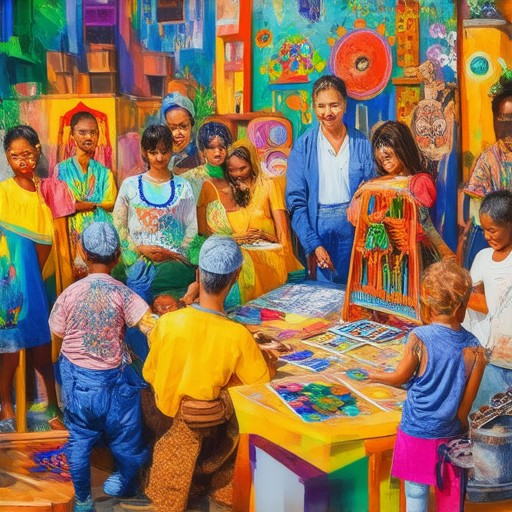
12 Common Art Activities That Build Literacy Skills
- Visual Storytelling – Create narratives through paintings, sculptures, or digital art to express ideas and enhance comprehension.
- Creative Writing – Use art as inspiration for writing short stories, poems, or scripts to develop narrative skills.
- Art Journals – Document daily thoughts, emotions, or experiences through drawings, sketches, and written reflections.
- Mural Creation – Collaborate on large-scale art projects that tell stories or convey messages, fostering teamwork and communication.
- Collage Making – Combine words, images, and textures to explore themes and concepts, enhancing analytical thinking.
- Poetry Slams – Perform original poems or reinterpret works, using art to connect with audiences and refine language skills.
- Theater Set Design – Transform spaces into scenes from books or plays, applying creativity to bring stories to life.
- Comic Book Creation – Develop sequential art to tell stories, improving reading comprehension and storytelling techniques.
- Scrapbooking – Compile meaningful items with captions or descriptions, practicing writing and organization.
- Graffiti Art – Express personal interpretations of literature or historical texts through public art, encouraging deeper understanding.
- Workshop Facilitation – Lead sessions on art-inspired writing, helping others explore connections between art and literature.
How to Teach the 7 Elements of Art
The 7 elements of art are fundamental concepts that every artist and art student should master. These elements provide the building blocks for creating visually appealing and meaningful artwork. Below is a step-by-step guide to teaching these essential principles:
- Line : Start by introducing students to the basic tool of art—the line. Lines can be straight or curved, thick or thin. Practice using lines to define shapes, create movement, and establish boundaries.
- Shape : Once students understand lines, introduce them to shapes. Shapes can be geometric (like squares, circles) or organic (like mountains, waves). Encourage students to experiment with different shapes to create interesting forms.
- Color : Introduce color theory next. Discuss primary colors (red, blue, yellow), secondary colors (orange, green, purple), and tertiary colors. Explain how colors interact to create harmony and mood in artwork.
- Texture : Teach students about texture, which adds depth and interest to artwork. Discuss tactile textures (like rough surfaces) and visual textures (like gradients or patterns). Provide materials for students to explore different textures.
- Form : Move on to form, which involves creating three-dimensional objects. Use techniques like shading and casting shadows to give objects a sense of depth and realism.
- Space : Explain how space creates balance and interest in artwork. Use diagonal lines, overlapping shapes, and negative space to guide students in arranging elements effectively.
- Perspective : Finally, introduce perspective, the art of representing three-dimensional objects on a two-dimensional surface. Use vanishing points and foreshortening to help students create a sense of depth and realism.
To enhance learning, encourage students to practice each element individually before combining them. Look at famous artworks together to identify these elements in real life, providing practical examples and inspiration. With consistent practice and creative experimentation, students will master the 7 elements of art and develop a strong foundation for their artistic journey.
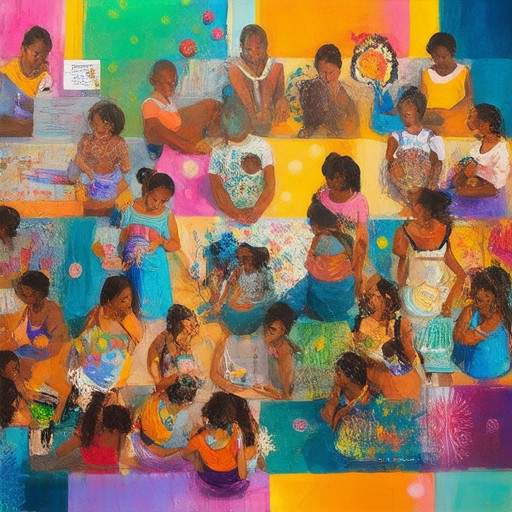
What Are the 10 Essential Literacy Practices?
Literacy practices extend far beyond traditional reading and writing, encompassing a range of skills essential for personal and societal growth. Here are 10 foundational literacy practices that are vital in today’s digital age:
- Active Reading:** Engage deeply with texts by previewing, questioning, and reflecting on key points. Techniques like annotating and summarizing enhance comprehension.
- Critical Thinking:** Analyze information critically, identify arguments, and evaluate evidence to form informed opinions.
- Media Literacy:** Develop skills to interpret and analyze media messages, recognizing biases and verifying credibility.
- Effective Communication:** Express ideas clearly through written, verbal, and visual means, tailoring messages to diverse audiences.
- Technology Navigation:** Safely and efficiently navigate digital tools and platforms, understanding their features and functions.
- Reflective Practice:** Regularly reflect on learning experiences to identify strengths, areas for improvement, and goals.
- Collaborative Learning:** Work effectively with others, contributing ideas and respecting differing perspectives to achieve shared goals.
- Cultural Awareness:** Understand and appreciate diverse cultures, histories, and perspectives to foster empathy and inclusivity.
- Adaptability:** Adjust to changing circumstances and learn from challenges to remain resilient and resourceful.
- Information Synthesis:** Combine information from multiple sources to create coherent and insightful analyses.
These practices form a cornerstone of modern education, preparing individuals to thrive in a rapidly evolving world. By mastering them, learners can unlock greater potential and contribute meaningfully to society.
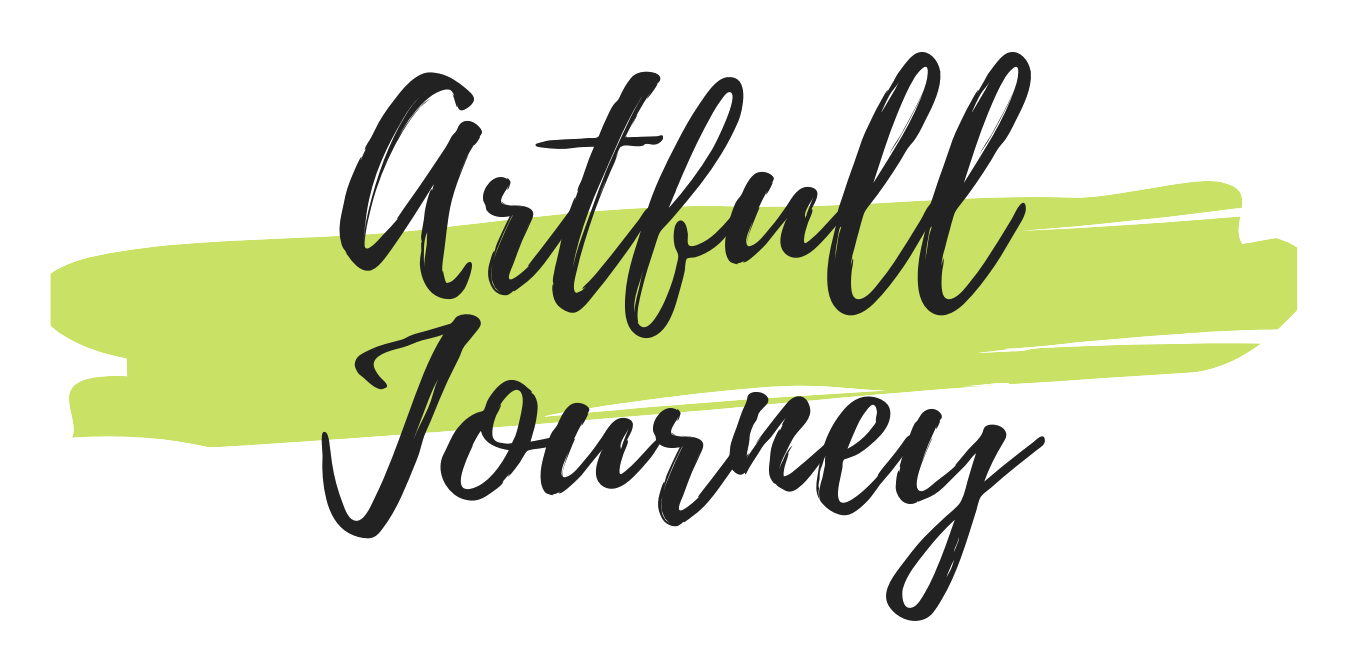



0 Comments